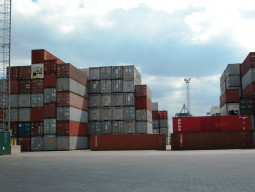
Though numerous retailers have already shifted much of their sales from traditional retail to e-commerce, they are getting even more curious, especially after the formal entry of China’s e-commerce giant Alibaba into Pakistan’s market.
Pakistan’s e-commerce market size set to cross $1b this year
According to market experts, in recent years, Pakistan’s e-commerce market has experienced an exponential growth with registered e-commerce merchants rising by more than 2.6 times. This is primarily because of the introduction of 3G/4G telecom services and availability of cheaper smartphones.
Pakistan has 72% mobile phone penetration which is one of the highest in South Asia. This visible growth along with 40 million internet subscribers and 20 million Facebook users are assets of the market and encourage many retailers to operate their own websites or opt for online marketplace to sell their products.
Online shopping: Consumer rights for fairer digital marketplaces
Nevertheless, there is still much room to grow. According to statistics, in the US, over $54.47 billion worth of sales were reported in 2017 by e-commerce giant Amazon alone.
In comparison, Pakistan’s overall e-commerce sales amounted to $622 million in 2017, which is projected to cross $1 billion before 2020.
Speakers highlight e-commerce's untapped potential in Pakistan
“We are investing heavily in technology to help retailers and major brands are using technology platforms such as theirs to link inventory from multiple locations to online stores in real time,” said Ali Aziz, Chief Executive Officer of Shopistan, an e-commerce products and services company.
Technology allows retailers to make better and faster business decisions. According to Aziz, innovation is being brought to Pakistan’s retail sector like never before.
Apart from technology, some of the factors that have served as a catalyst to this industry’s growth have been ease of purchasing while sitting at home and availability of cash-on-delivery option where one can pay only when he or she gets the product.
This growth is not just confined to major cities of Pakistan. According to Jawad Farid, Head of Corporate Innovation at Excellence Delivered - a technology company, there has been a significant demand for e-commerce services from both tier-2 and tier-3 cities of Pakistan.
“Though it is a fairly new business trend for Pakistan, online shopping is spreading quickly,” said Farid.
The size of the e-commerce market is hard to judge and the current market is estimated to be worth around $600 million with some experts suggesting it could be far higher. Explaining the mechanics behind e-commerce, Farid said the primary payment method currently being used was cash-on-delivery which accounted for over 90% of online purchases.
Statistics suggest around 35% of Pakistan’s monthly 70,000 cash-on-delivery shipments are made outside of Karachi, Lahore and Islamabad.
It shows that though online shoppers are largely from urban areas, rural shoppers are also willing to go online to purchase goods they cannot find in local markets.
“This high growth in sales and consumer preference has also encouraged brands to rethink their strategy pertaining to conventional retail channels and try the alternative e-commerce methodologies,” Farid added.
Published in The Express Tribune, May 23rd, 2018.
Like Business on Facebook, follow @TribuneBiz on Twitter to stay informed and join in the conversation.


















COMMENTS
Comments are moderated and generally will be posted if they are on-topic and not abusive.
For more information, please see our Comments FAQ